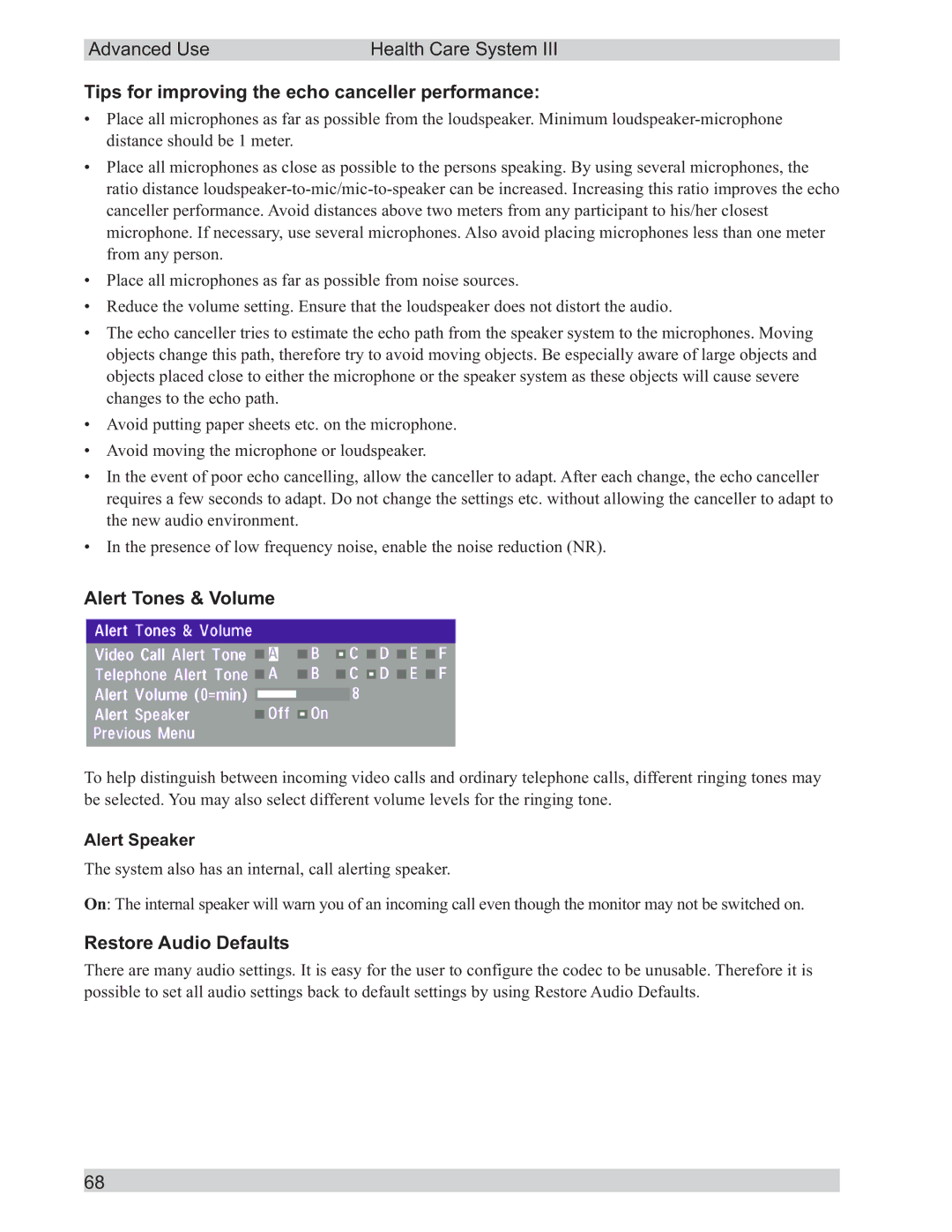
Advanced Use | Health Care System III |
Tips for improving the echo canceller performance:
•Place all microphones as far as possible from the loudspeaker. Minimum
•Place all microphones as close as possible to the persons speaking. By using several microphones, the ratio distance
•Place all microphones as far as possible from noise sources.
•Reduce the volume setting. Ensure that the loudspeaker does not distort the audio.
•The echo canceller tries to estimate the echo path from the speaker system to the microphones. Moving objects change this path, therefore try to avoid moving objects. Be especially aware of large objects and objects placed close to either the microphone or the speaker system as these objects will cause severe changes to the echo path.
•Avoid putting paper sheets etc. on the microphone.
•Avoid moving the microphone or loudspeaker.
•In the event of poor echo cancelling, allow the canceller to adapt. After each change, the echo canceller requires a few seconds to adapt. Do not change the settings etc. without allowing the canceller to adapt to the new audio environment.
•In the presence of low frequency noise, enable the noise reduction (NR).
Alert Tones & Volume
To help distinguish between incoming video calls and ordinary telephone calls, different ringing tones may be selected. You may also select different volume levels for the ringing tone.
Alert Speaker
The system also has an internal, call alerting speaker.
On: The internal speaker will warn you of an incoming call even though the monitor may not be switched on.
Restore Audio Defaults
There are many audio settings. It is easy for the user to configure the codec to be unusable. Therefore it is possible to set all audio settings back to default settings by using Restore Audio Defaults.
68
